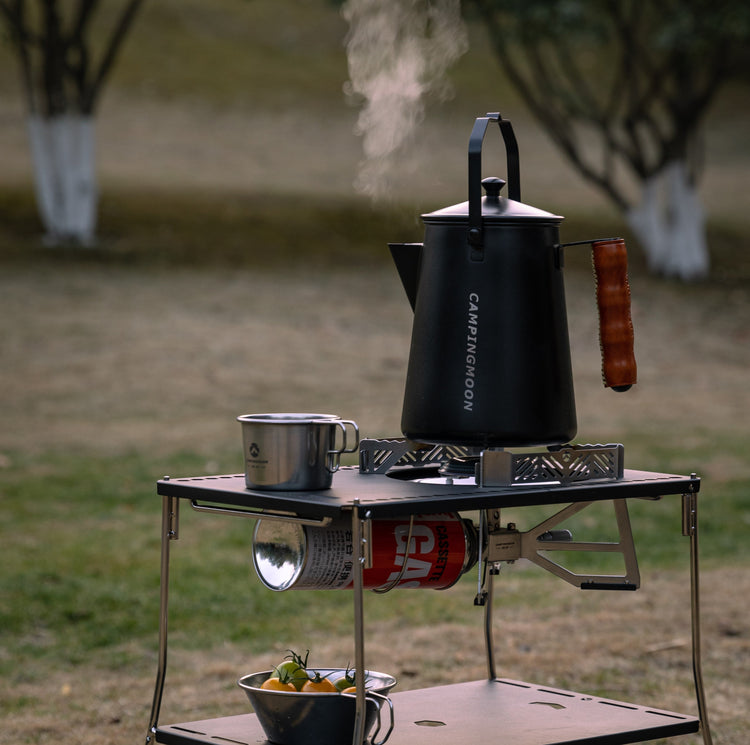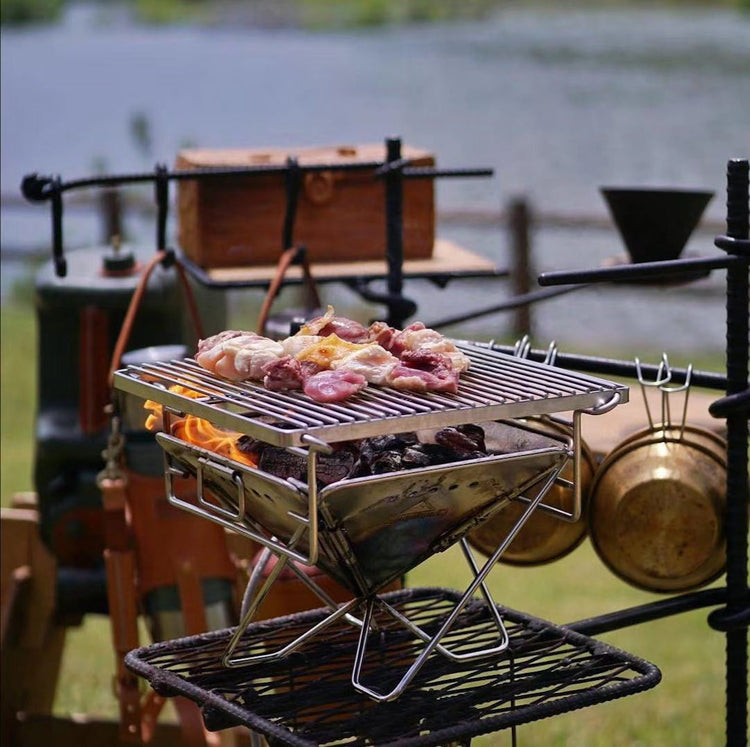Selecting the optimal camp stove for your next adventure is far more than a mere choice—it’s an essential decision that can either enhance or diminish your outdoor experience. Whether you're trekking through rugged terrain, embarking on a family camping getaway, or enjoying the serene solitude of the wilderness, having a stove that delivers exceptional cooking performance will be crucial to your comfort and success in the wild. Understanding the vital features of camp stoves ensures that you select one that aligns perfectly with your needs and camping style.
In this extensive guide, we delve deep into the factors that influence your decision when choosing a camp stove. From fuel varieties to stove dimensions, portability, and usability, every detail plays a role. By the conclusion of this article, you’ll possess the expertise to pick a stove that will truly enhance your journey.
A Deeper Dive Into the Varied Types of Camp Stoves
There’s no one-size-fits-all when it comes to camp stoves—different types cater to different requirements. Below, we explore the various categories of stoves available, helping you understand their strengths and limitations.
1. Compact Canister Stoves
Canister stoves shine in their simplicity and portability, making them an outstanding choice for solo travelers or minimalist backpackers. These stoves utilize pre-pressurized gas canisters that are a blend of butane and isobutane. With an easy ignition system, they are perfect for quick meals, especially for those in need of speed and convenience.
Benefits of Canister Stoves:
- Ultra-portable: These stoves are incredibly light and easy to carry.
- Effortless ignition: No matches or lighters are needed; simply press a button.
- Rapid water boiling: Ideal for quickly heating water for coffee, tea, or dehydrated meals.
- Perfect for solo or small group trips.
Drawbacks:
- Limited fuel availability: Canisters can be tough to locate in remote areas.
- Fewer fuel options: You are tied to the canister system, which may not be as versatile.
2. Liquid Fuel Stoves
For those embarking on extended camping trips or mountaineering expeditions, liquid fuel stoves offer unmatched durability and versatility. These stoves are powered by fuels like white gas, kerosene, or diesel, and they perform admirably in extreme weather conditions. Liquid fuel stoves are particularly favored in colder climates where reliability is paramount.
Advantages of Liquid Fuel Stoves:
- Flexible fuel sources: Choose from a variety of liquid fuels to keep the stove running.
- Ideal for cold climates: Performs exceptionally well in freezing temperatures.
- Extended burn times: Larger fuel tanks allow for longer cooking durations.
- Great for boiling large amounts of water.
Disadvantages:
- Bulky and heavy: Not the most lightweight option, especially for longer hikes.
- Complex maintenance: Requires regular cleaning of fuel lines and components.
- Setup time: Can take longer to set up compared to simpler canister models.
How Liquid Fuel Stoves Work – MSR’s stove guide.
3. Wood-Burning Stoves
Wood-burning stoves are the embodiment of self-sufficiency. These stoves allow you to harness nature’s own fuel, like twigs, branches, and even pinecones, eliminating the need to carry extra fuel. They are an excellent option for those seeking to minimize their ecological impact or for campers who want to immerse themselves in the outdoor experience by relying on nature’s resources.
Benefits of Wood-Burning Stoves:
- Fuel-free: No need to pack fuel—just gather twigs and branches.
- Environmentally conscious: Utilizing natural biomass for fuel keeps the carbon footprint low.
- Convenient fuel collection: Natural fuel is often abundant, especially in forested areas.
- Lightweight and compact: Perfect for off-the-grid adventurers.
Drawbacks:
- Dependence on fuel availability: You must gather fuel on-site, which can be challenging in wet conditions.
- Slow startup: Gathering and preparing fuel can make this a slower option.
- Weather-sensitive: Not ideal for rainy or damp environments.
4. Multi-Fuel Stoves
For the ultimate flexibility, multi-fuel stoves reign supreme. These versatile models can use an array of fuel types, including gasoline, kerosene, and diesel, making them invaluable for international travelers or those heading to remote locations where fuel availability is uncertain.
Advantages of Multi-Fuel Stoves:
- Global fuel compatibility: Ideal for international journeys with inconsistent fuel availability.
- Versatile fuel options: Capable of running on several types of fuels depending on your needs.
- Reliable performance: These stoves deliver consistent power across diverse environments.
Disadvantages:
- Size and weight: These stoves are typically heavier than other models.
- Additional maintenance: More complex than single-fuel models, requiring thorough upkeep.
- Higher cost: Multi-fuel stoves are generally pricier.
Vital Features to Evaluate Before Making a Decision
Once you've narrowed down your stove type, it's time to focus on specific features that will shape your cooking experience. Here are the critical elements to consider:
1. Weight and Portability
When traversing the backcountry, weight can make or break your trip. A stove that is both lightweight and compact is indispensable for backpacking. The goal is to minimize pack weight without sacrificing cooking ability. Smaller, more portable stoves like canister models are optimal for minimalists, while larger liquid fuel stoves might be necessary for group camping.
- Canister stoves are generally the lightest.
- Liquid fuel stoves are bulkier but offer larger cooking capacities.
- Wood-burning stoves can be surprisingly compact, although they require gathering fuel.
2. Cooking Capacity
Do you need a stove for one, or will you be cooking for a crowd? Stoves with higher BTU ratings or multiple burners are essential for large groups or for cooking complex meals. If you're looking for a stove that can handle multiple pots or a variety of dishes at once, choose accordingly.
3. Fuel Efficiency and Burn Time
Fuel efficiency is vital for multi-day trips, as it influences how much fuel you’ll need to carry. A high-efficiency stove uses less fuel, which not only lightens your pack but also saves space. Consider burn time as well—especially if you're in remote areas with limited access to fuel.
- Canister stoves are efficient and provide quick cooking.
- Liquid fuel stoves burn longer, with larger tanks for prolonged cooking.
- Wood-burning stoves may require effort to gather fuel, but they last for long durations.
4. Ease of Setup and Use
A stove that’s easy to set up and operate saves time and frustration. Many modern stoves come with push-button igniters, eliminating the need for matches. Some even feature built-in windshields to combat breezy conditions, offering more convenience when the weather turns.
5. Durability and Build Quality
Your stove must endure the ruggedness of outdoor use. Stoves crafted from stainless steel or high-grade aluminum offer sturdiness and resilience, ensuring they stand up to harsh conditions and frequent use.
6. Weather Resistance
A stove that can withstand the elements is a game-changer. If you’re heading into winter camping or areas prone to wind, a stove with wind protection and adjustable flame control will maintain optimal performance even in challenging conditions.
Top Brands to Look Out For
When it comes to reliable, durable stoves, a few names stand out in the outdoor community:
Campingmoon
Campingmoon excels in crafting top-tier outdoor cooking gear. Known for their precision-engineered stoves, Campingmoon offers a wide array of products that are both efficient and built to last, whether you’re looking for a portable canister stove or a rugged multi-fuel model.
MSR (Mountain Safety Research)
MSR stoves are synonymous with durability and reliability. Their products are crafted for both extreme conditions and everyday adventures, making them a staple in many outdoor enthusiast’s kits.
Jetboil
Famed for its lightning-fast boiling stoves, Jetboil is the go-to choice for backpackers and those on the move. With their compact design and integrated cooking systems, these stoves offer convenience and speed without the added bulk.
Primus
Primus offers a wide range of versatile, high-quality stoves that cater to all types of camping. Their multi-fuel systems are particularly popular among those who need a stove that adapts to a variety of fuels and conditions.
Frequently Asked Questions (FAQs)
What is the best camp stove for beginners?
If you’re new to camping, canister stoves are your best bet due to their simplicity and ease of use.
Can I use a canister stove in cold weather?
Yes, but canister stoves perform better in moderate temperatures. In cold conditions, you may need a liquid fuel stove or a stove designed for low temperatures.
How much fuel do I need for a weekend camping trip?
The amount of fuel depends on your cooking needs. Generally, one canister stove will last for a weekend with moderate use, while liquid fuel stoves may require more fuel for longer trips.
What’s the most efficient stove for boiling water?
For boiling water quickly, The new Campingmoon XD-5F stoves are incredibly efficient due to their integrated cooking systems.
Are multi-fuel stoves worth the extra cost?
Yes, if you’re going on an international trip or need flexibility in fuel sources, multi-fuel stoves are invaluable.
How do I store my camp stove safely?
Store your stove in a dry, cool place away from direct sunlight, and ensure it’s cleaned thoroughly before storage.
In Conclusion
The ideal camp stove for your trip depends on many factors, from your cooking style and the environment you’ll be camping in, to the number of people you’re cooking for. Whether you prefer the lightweight nature of a canister stove, the versatility of a multi-fuel stove, or the eco-friendliness of a wood-burning stove, there’s a stove tailored to your needs.
Take time to carefully evaluate your stove options, ensuring that it complements your outdoor cooking ambitions and enhances your overall camping experience.
References







